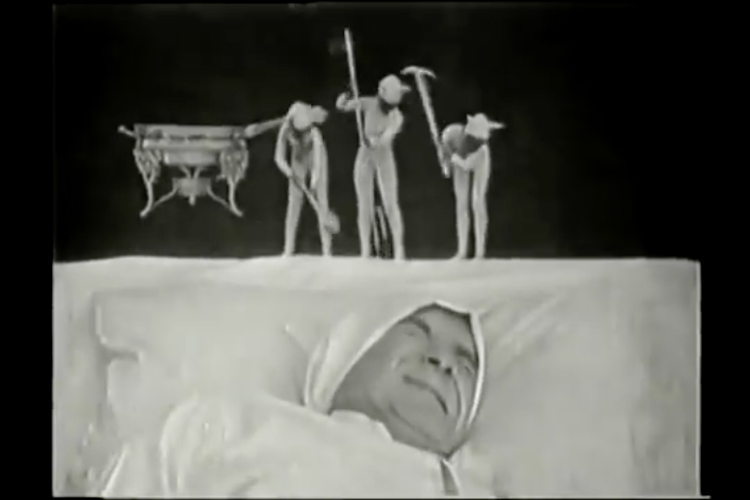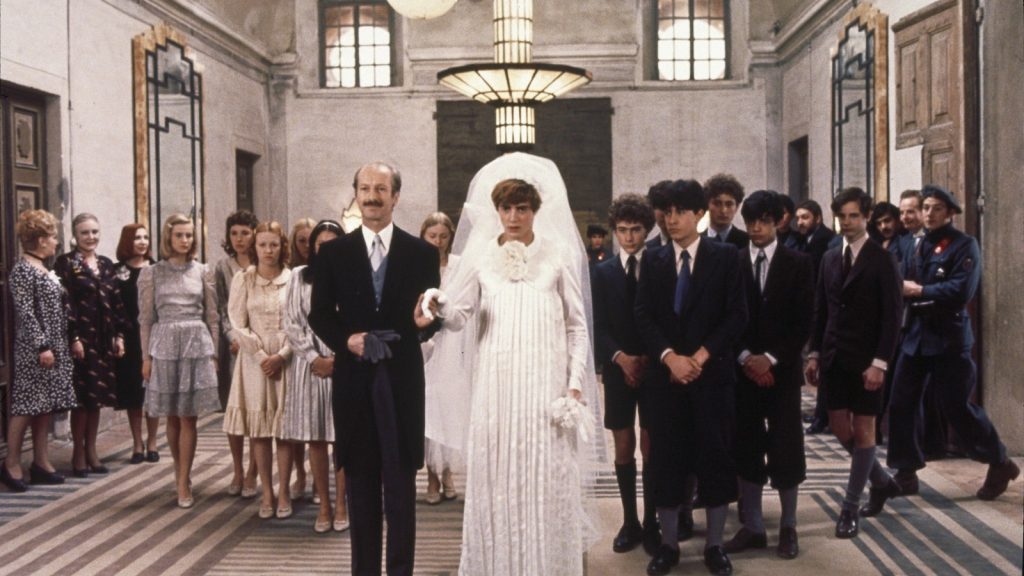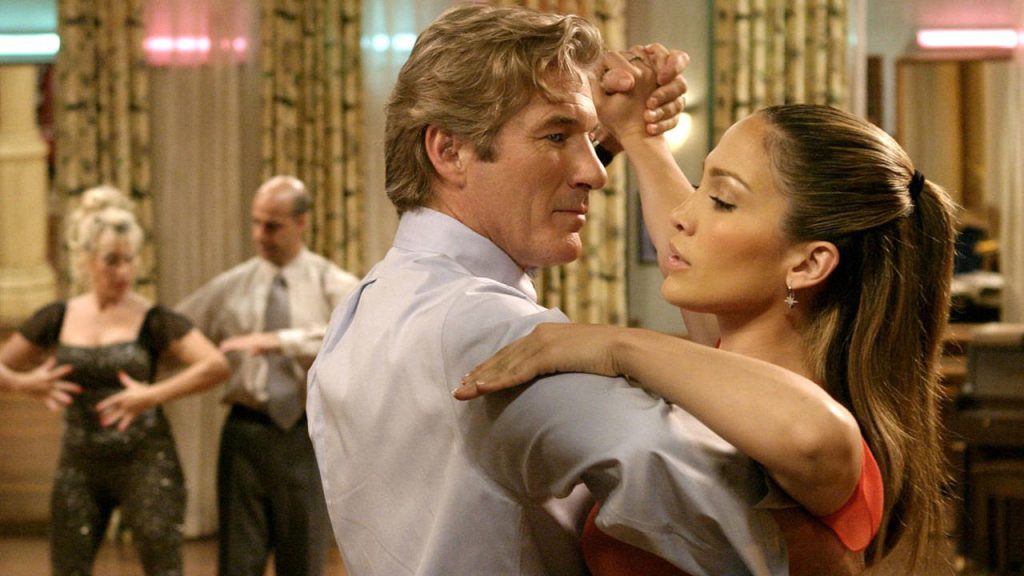In January, Wired magazine released a video that, in their words, “breaks down the history of people miniaturization in movies.” VFX Supervisor Jamie Price covers films through the decades depicting humans who have been shrunken down or were tiny to begin with. While he does an expert job of explaining the technical processes used to make actors look smaller, something about the piece concerns me — and it isn’t just the fact that whole thing is a thinly disguised promo for Downsizing. It’s the first line.
“One of the first primary uses of visual effects to shrink people was in the movie The Bride of Frankenstein in 1935,” begins Price. With that remark, he sweeps the first decades of film history under the rug, ignoring not just an entire era of filmmaking, but also the filmmakers who invented the very effects he later discusses. In doing so, he has overlooked perhaps the single most fascinating fact about miniaturizing humans in film: that the concept is over a hundred years old. The Wired video may illuminate a smattering of films with a shrinking theme, but it completely bypasses the origin story.
It begins with magic.
As a stage magician, Georges Méliès was particularly obsessed with trickery. When he began to make his own films after seeing an exhibition by the Lumière brothers, he first turned to magic acts for subject matter, recreating tricks he had performed for audiences at his Paris theater. By accident, he stumbled onto the still-used technique known as the substitution splice, and the magician-turned-filmmaker was soon experimenting with scenarios that relied on camera trickery rather than sleight-of-hand. The forced-perspective technique that Price talks about in Darby O’Gill and the Little People in 1959? Méliès was using it in the 1890s. Soon after, Méliès was incorporating not only multiple exposures and dissolves, but also substitution splices, superimpositions, split screens, and time-lapse photography into his short films.
Méliès began to play with time and space and discovered that he had a particular affinity for making items — and people — appear to change in size. He first played with the concept of size for comedic effect, using substitution splices in Addition and Subtraction (1900) to change three women into one large woman, and then change the large woman into a child. The fact that they are all wearing the same costume supports the joke that they are morphing into different sizes, though it’s obvious they are completely different actors. His first film to feature a single individual changing size (and probably the first film ever to do so) is The Devil and the Statue in 1901. In the short film, a devil grows to the size of a giant and shrinks back down again, an effect Méliès achieved with a dolly technique he invented, moving the camera forward and back with a pulley attached to a little wagon on a track.
He would use the dolly technique again to make his own head seem to grow and shrink in size later the same year in The Man with the Rubber Head. In The Dwarf and the Giant, you can see multiple effects at once, as Méliès used superimpositon, the dolly technique, and split-screen to allow a giant-sized version of himself to cavort alongside a smaller one. Méliès continued to play with size in films such as The Dancing Midget (1902), in which a magician produces a minuscule ballet dancer from an egg; and in The Lilliputian Minuet (1905), wherein a quartet of tiny dancers are transformed into playing cards.
Méliès’s success spawned tons of imitators (though some filmmakers, like Edison, simply scratched off the Star Films logo and distributed his films as their own). Trick shorts were part of the bread-and-butter of the earliest studios, and experimental filmmakers followed up with their own fantastic takes on size, whether in imitation of Méliès or as a result of their own experiments. Walter R. Booth was also a magician, and the short films he devised with Robert W. Paul made liberal use of trickery. In The Cheese Mites, or Lilliputians in a London Restaurant (1901), a diner is surprised by a gang of miniature people emerging from a wheel of cheese. (The film is notable for its early use of both superimposition and a jump-cut.) Booth’s Pocket Boxers (1903, see video below) features a tabletop version of boxing with miniaturized boxers cheered on by two regular-sized men who return the boxers to their pockets at the fight’s end. Other studio shorts depicting miniature people in the early 1900s include The Dwarfs’ Cake Walk (1903, Pathé Frères), which features a tiny couple dancing a cakewalk, and A Pipe Dream (1905, American Mutoscope and Biograph Company), in which a miniature man appears in a woman’s pipe smoke and makes declarations of love.
The themes of smoking and miniature people appeared together again in 1909 with Vitagraph’s Princess Nicotine, in which a man surrounded by smoking paraphernalia encounters two fairies who emerge from his cigar box. Filmed by J. Stuart Blackton and Albert S. Smith, the short was touted in newspapers as “one of the cleverest trick films ever produced,” and some ads teased the public with the special effects, saying you’ll “wonder how ‘tis done.” The interaction between the human-sized man and the tiny fairies wowed audiences and was still deemed notable for its trick photography a few years later when the film was given an entire chapter in the 1912 book Moving Pictures, How They Are Made and Worked by Frederick A. Talbot. The book explains how forced perspective combined with mirrors allowed the actors to work in proximity to each other while appearing to be of different sizes. Giant props added to the effect, including, according to Talbot, “a property packet of cigarettes nearly six feet in height, containing cigarettes thirty-six inches long.”



If any filmmaker serves as a link between the pioneering special effects of Georges Méliès and the miniaturization techniques seen in Bride of Frankenstein, it’s Segundo de Chomón. Often referred to as “the Spanish Méliès,” several of his films for Pathé Frères display similar expertise with camera trickery as well as hand-tinting. Like Méliès, he had a penchant for tiny people, especially pretty women, conjured out of eggs (Easter Eggs, 1907) or mirrors (The Magic Mirror, 1908), posed attractively in costumes that serve as an early version of cheesecake. In Music, Forward (1908), tiny musicians perform within the confines of music notes — an obvious derivation of Méliès’s The Music Lover (1903), which features animated human heads as notes. De Chomón pushed the effects even further than Méliès — which he often did — by encasing an entire person in each note.
De Chomón’s most memorable instances of miniaturizing people show off his darker, weirder side. He didn’t just push camera effects further than Méliès — pioneering innovations in hand-drawn animation, stop-motion, and claymation — he moved past using special effects to surprise and amaze and created scenes that were decidedly more bizarre, sometimes even disturbing. The Frog (1908) is a fun bit of surrealism that juxtaposes a giant spinning head with small people as well as a miniature human dressed as a frog. (Lady Gaga borrowed several elements from the film for her video to the song “Applause,” right down to the tinted smoke, the clamshells, and the giant spinning head).
De Chomón’s penchant for tiny humans in glass predates Bride of Frankenstein’s homunculi by more than quarter of a century. In The Enchanted Glasses (1907), miniature women are poured from a pitcher into pint glasses. It’s a variation of the girls-in-a-bottle trick featured earlier the same year in one of the filmmaker’s most macabre shorts, The Red Spectre (1907), starring a demonic magician in a skeleton leotard who performs a sequence of magic tricks with diabolical twists (a levitating woman is burned to cinders, for example). The tiny women are this time poured from a pitcher into milk bottles and made to disappear. In 1912, de Chomón devised a pair of bottled creatures that have perhaps still not been surpassed in weirdness. In the standout visual from Andalusian Superstition (said to have influenced Dali and Buñuel), a small creature with a human head and a monstrous crustacean body writhes in the confines of its bottle.

Miniature humans (and sometimes human-like imps or devils) often turned up in Prohibition-era films to warn about the perils of alcohol, usually in the form of hallucinations from too much drink, or as a withdrawal symptom from a lack thereof. In Universal’s The Craving (1918), directed by and starring Francis Ford, a recovered alcoholic is enticed (via hypnotic power, no less) to drink again. His hallucinations take the form of a trio of women who splash about in his cocktails. Variety reviewed the picture: “Several novel effects are secured in the illustration of some of Wales’ hallucinations. He toys with wine glasses and bottles in which women dance in wild abandon, and he curiously picks the wriggling figures up in his fingers. But one wonders what it is all about.” An unusual hallucination scene appeared in the now-lost film Absinthe (1914), which we can only imagine via descriptions and a magazine still. The protagonist, under the influence of absinthe, strangles his wife to death and later is haunted by the miniature image of himself re-enacting the event inside of an absinthe bottle.
Hallucinations of tiny people weren’t limited to alcohol as a cause, though. Food nightmares (oddly enough, a popular trope in early cinema) sometimes led to terrible visions, such as in 1906’s Dream of a Rarebit Fiend, wherein a man who has overindulged in hot cheese sees diminutive imps come out of a chafing dish to frolic in his dreams.
Some of the most notable uses of miniaturizing effects in early film appear in titles you’ll recognize, even if you’re unfamiliar with the earliest version. Price mentions the Tinker Bell character in 1991’s Hook as an example of digital effects, but few people are aware that Peter Pan was a popular silent film long before it was given the Disney (or Spielberg) treatment. The Famous Players production in 1924 was hugely acclaimed, a critic in Moving Picture World going so far as to say that “if you don’t like it go home and cut your throat because you just don’t belong.” Virginia Brown Faire was Tinker Bell to Betty Bronson’s Peter Pan, and she was made to look not only tiny, but luminescent and in flight, all without digital effects.

Alice in Wonderland is another famous title that received film treatment long before most people realize, as early as 1903, in a British production from Hepworth with shrinking effects deemed special enough to still be talked about eight years later in Motography magazine. The article “Tricks and Magic in Pictures” explained how the effect was achieved: “In each instance the background, whether a room, a garden walk, or seashore, was arranged and taken as a first exposure. Then a second exposure was made of the film with Alice in the picture. To make her larger, the camera was moved toward her on a wheeled platform as she acted.” Gulliver’s Travels is another well-known title featuring miniature people. And who tackled it first? None other than Georges Méliès, using his own invented camera tricks in Gulliver’s Travels Among the Lilliputians and the Giants in 1902.

Far less well known is the lost Warner Bros. feature Wolf’s Clothing (1927), the last reels of which were most likely destroyed in a vault fire in 1933. Praised for its “unusual photography,” the comedy featured a dream sequence wherein the main characters were miniaturized. Possibly inspired by the shrinking elements of Alice in Wonderland, the scene made the most of a giant key, to which actor Monte Blue desperately clung. The camera work was effective, as one reviewer remarked that “the effect is more exciting then if he were hanging perilously from the top rafters of a huge building.” Also obscure, but with more of a decided connection to Downsizing is So High (1926), a Bryant S. Young Productions short released for exhibition in schools and community centers that features a miniature man who moves into a child’s doll house.
While we can quibble over Price’s meaning of the word “primary,” it’s worth pointing out that Dr. Pretorius’s homunculi in Bride of Frankenstein are only a very small part of a big movie. It stands to reason that films where the shrinking is a main plot point are pretty significant to the genre even if they were shorts — especially when they played to packed houses and were praised for their use of special effects. The shorts and features left out of the Wired history invented and pioneered special effects that are still in use today, more than a century after the deaths of their inventors. The techniques used may have made people appear small, but their legacy couldn’t be more expansive.
Join our mailing list! Follow on Twitter! Like us on Facebook!



